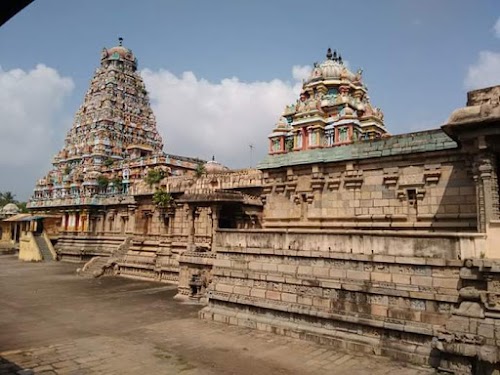
Kumbakonam
Thanjavur, India
- Bathe in the Mahamaham tank.
- Discover the Chakrapani Temple.
- Enjoy traditional South Indian cuisine.
- Explore the Airavatesvara Temple in Darasuram.
- Shop for silk and cotton textiles.
- Visit the Adi Kumbeswarar Temple.
- Visit the Sarangapani Temple.
Known for:
Description:
Kumbakonam, a temple town in the Thanjavur district of Tamil Nadu, India, is a treasure trove of ancient Dravidian architecture and religious significance. Known as the 'City of Temples,' it boasts a high concentration of shrines dedicated to various Hindu deities, drawing pilgrims and history enthusiasts alike. The town is also famous for its Mahamaham festival, a grand event held every 12 years, attracting millions of devotees. Beyond temples, Kumbakonam offers a glimpse into traditional South Indian culture, with its bustling markets, aromatic coffee houses, and serene atmosphere. The Cauvery River and its tributaries enrich the land, contributing to the region's agricultural prosperity and scenic beauty. Experience the spiritual heartland of Tamil Nadu in Kumbakonam.
History:
Kumbakonam's history stretches back to the Sangam period and has been ruled by various dynasties, including the Cholas, Pandyas, Vijayanagar Empire, and the Thanjavur Nayaks. The town reached its zenith during the Chola dynasty (9th to 12th centuries CE), when it served as an important center of art, architecture, and learning. Many of the magnificent temples that stand today were built or patronized by the Chola rulers, showcasing their architectural prowess. After the decline of the Cholas, Kumbakonam came under the rule of various other empires. During the British Raj, it was a prominent educational and cultural hub, earning the moniker 'Cambridge of South India.' The town's rich history is etched in its temples, inscriptions, and traditions, making it a living testament to the bygone eras.